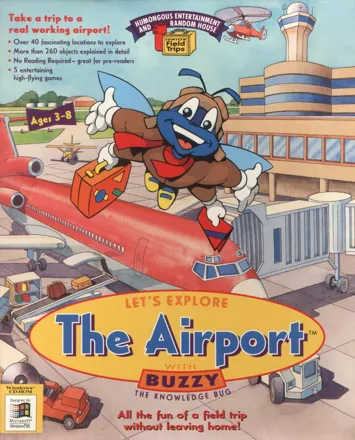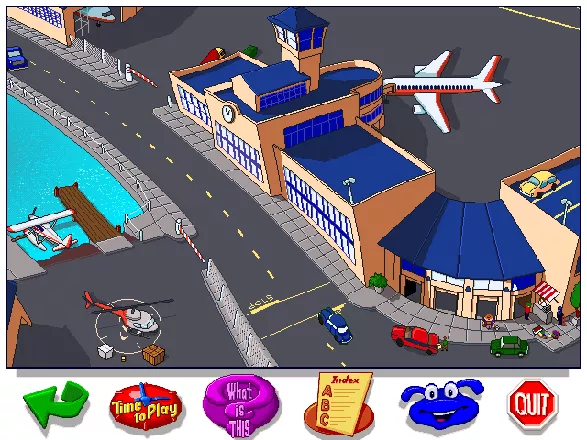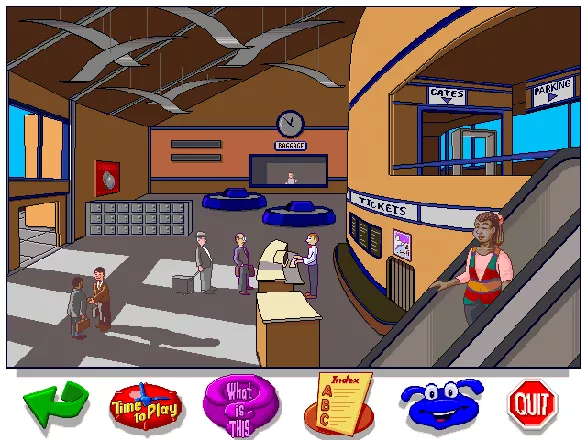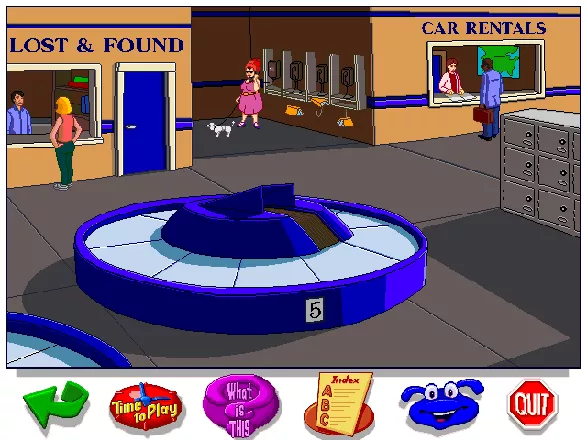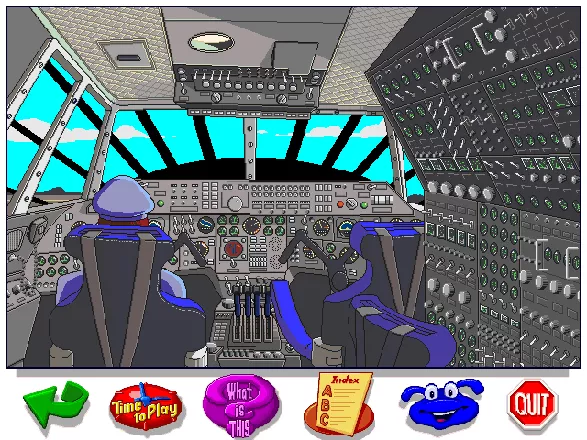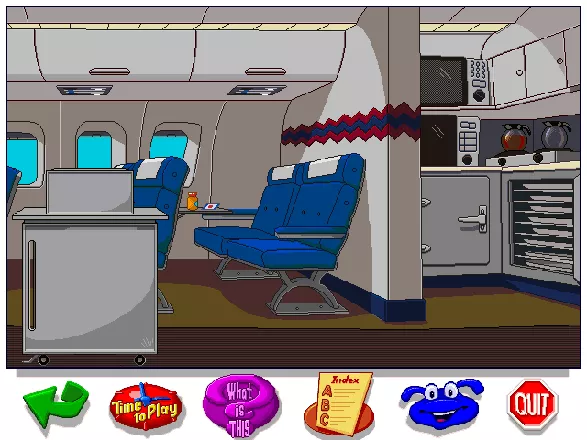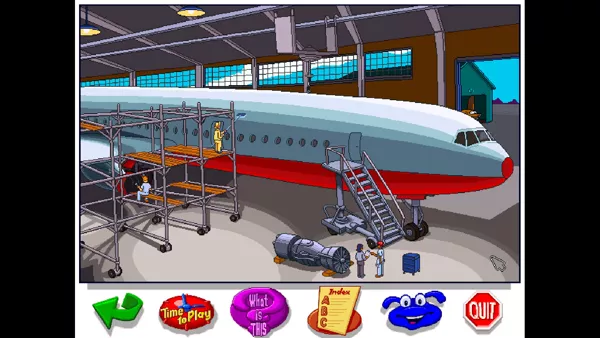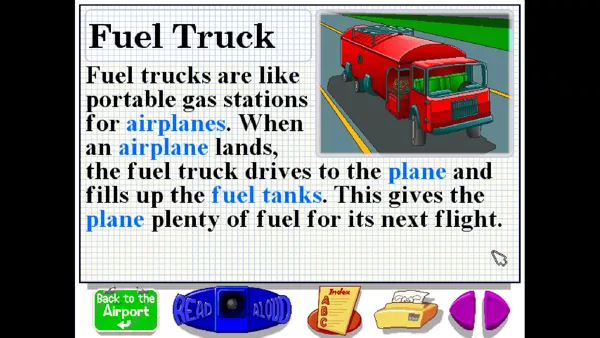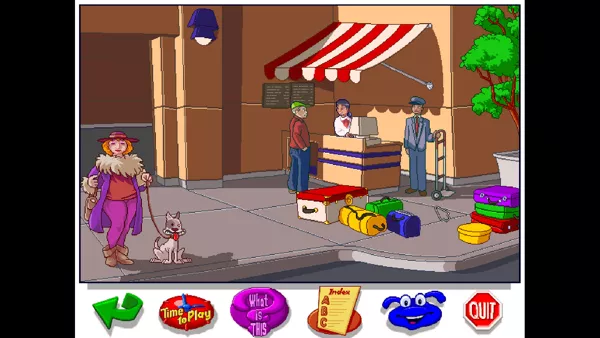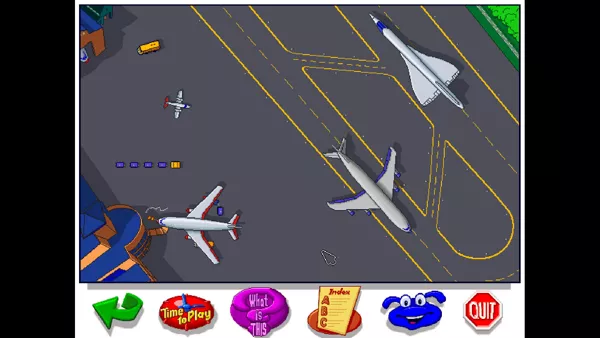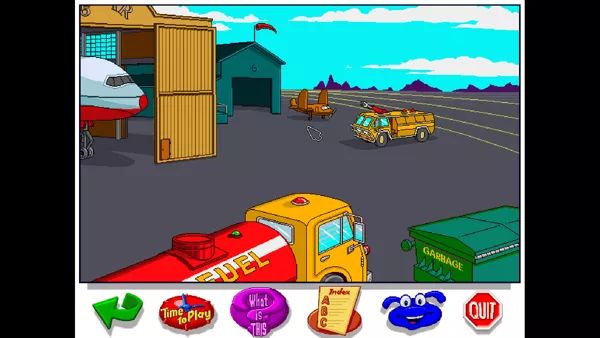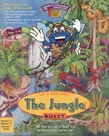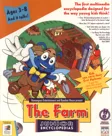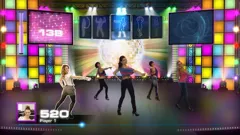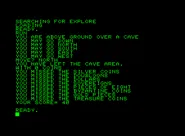Let's Explore The Airport
Description
The Airport allows kids 3-8 (or any age) to explore a modern airport, with their guide Buzzy The Knowledge Bug. Kids can visit over 40 location, from hangers, to control towers, to cockpits. Items in each location can be clicked on for either amusing animations, or to ask "What is This?" which will take them directly to the encyclopedia page describing that item. The encyclopedia has more than 200 descriptions in it. It also has an index, to jump directly back to interesting items. The encyclopedia is text, but Buzzy can also read the text for young players.
In addition, the game has 5 Time To Play mini-games. The Coloring Book has 15 different pictures to color and print out. Trivia contains 100 airport-related questions with answers within the game - for pre-readers, Buzzy will read the question out loud and also provide hints. There are 3 difficulty levels for this game. In Lost Luggage, you work your way through 99 levels of conveyor belt puzzle madness, trying to get all the moving luggage to their proper destination. True detectives will like the Find It game, where the game picks 10 items within the game and you go find them. This game has 3 difficulty levels. Finally, there's What Is It? This is a picture/word matching game, with three difficulty levels and 33 pictures per level - all from the airport environment.
Groups +
Screenshots
Promos
Credits (Windows version)
54 People (52 developers, 2 thanks) · View all
| Producer | |
| Design | |
| Content Writer | |
| Dialog Writer | |
| Programmers | |
| Sound Effects | |
| Dialog Editing | |
| Interface Programming | |
| Games Programming | |
| Background Illustrations | |
| Art and Animation | |
| [ full credits ] | |
Reviews
Critics
Average score: 90% (based on 1 ratings)
Players
Average score: 3.7 out of 5 (based on 7 ratings with 2 reviews)
The Good
To begin with (and expand later), the whole "Let's Explore" (mini)series are not really games - a more precise name would be "interactive themed encyclopedias for children". In this particular installment the theme is "airports and air transport". We move through the area just like in Humongous Entertainment games - by clicking arrows that show up in places where we can go to the next screen - however instead of doing tasks, we can freely explore the area, learn something and also get an occasional laugh from some funny animations.
The drawing style is very clean and different from other HE games (OK, let's unprecisely assume these are games too) - the slightly paint-like graphics of the earliest games (such as the first two Putt-Putt games or "Fatty Bear's Birthday Surprise"), the most common, more cartoon-like style of later Putt-Putt, Freddi Fish or Pajama Sam games, or the deliberately slightly "dirty", "sketchy" style of Spy Fox games. It's characterised by thin, sharp outlines, a meticulous attention to detail and mostly simple shading. Very clean outlines make it easier to show all the details such as lots of controls inside a plane's cockpit.
The whole game, or encyclopedia, contains many of the trademark HE animations. If the arrow is transparent, there's nothing to click, but if it becomes white - the particular element is interactive and a funny animation can be triggered. Some are very simple - something moves and that's all - but some are interesting and funny. A seal jumps out of the water and does a trick with someone's suitcase, a drawing of Putt-Putt appears on a piece of paper inside the control tower... In some cases clicking on parts of the scenery may also be necessary to discover some objects or to gain access to another place, for example to open doors.
I suspect a conscious decision to make the game gender-inclusive. It's done in a very non-preachy, rather subtle way: the images next to the entries for "pilot" and "marshaller" (a person who helps manoeuvre a plane on the ground by giving signs to the pilot) both show women and the entry for "flight attendant" shows both a man and a woman - even though the stereotypical, often sexualized image is a woman, necessarily a young and pretty one (on some airlines female flight attendants can't even wear pants!). Such images can do more than words: they influence children's awareness, show them that career choices are not limited by gender. It's a welcome decision in a world where female pilots are still few (especially in commercial aviation) and often greeted with hostility.
Apart from the "encyclopedic" part, the whole program also includes minigames. "Coloring" and "Find It" are based on the same principle as in other parts of the series, "What Is It" is rather boring, "Trivia" is a very nice quiz, and "Lost Luggage" is by far the best minigame in the whole series. A funny thing is that when I first played it, I didn't know "Pajama Sam's Sock Works yet, and it's based on the same idea, pretty much a remake of "Lost Luggage". That said, there are differences between the both games. Some levels of "Sock Works" were directly taken from "Lost Luggage", but SW also have an extra function not found in LL - dyeing. You can change the color of Sam's socks in some levels, but you can't change the color of suitcases, so if LL was viewed as a remake of SW (which is of course wrong because "Let's Explore the Airport" is earlier), some levels couldn't be "imported" to LL. However, the chances of completing all levels of this minigame are marred by a serious design error I will describe in "The Bad".
The Bad
The game is not really very comfortable to play. It's possible to say there are two "modes" of interacting with any screen. The normal arrow is used for clicking things to discover those animations I described earlier. When you want to look for explanations, you have to click the "What is this?" button and the arrow will change to a question mark. However when you go back to the screen after reading an entry, you have to click this button again to look for other entries.
Getting (a bit) lost is possible. Many entries are connected to others by links and there are two ways of going "back to the game": the "Back to the airport" sign at the bottom of the screen takes you back to the last screen, but clicking the large arrow that appears at the top leads to the screen where the particular object appears. This is useful - sometimes you move between entries and would like to know where a particular object was found, but it's also an opportunity for getting lost and wasting time on going back to the last screen. Navigating this system requires a bit of getting used to.
The disparity between levels of technical accuracy is sometimes striking. Some entries are very simple, written in what we typically associate with a language comprehensible for children. Sometimes these entries are even not very precise. On the contrary, entries for particular models of aircraft are very detailed, for example an airplane is shown with many elements highlighted, such as slat, aileron, fin. Sure, it is interesting, but it's a bit as if the designers couldn't decide if the game is made for quite small children or for older children already interested in engineering.
It seems that "Lost Luggage" has 99 levels, not 100 like "Pajama Sam's Sock Works". However, completing the last one is nearly impossible. One of the elements for moving luggage are chutes - the suitcase drops into a chute and pops out of another chute marked with the same symbol. If there are more than two chutes with the same symbol, the suitcase moves to a default one (if more than one direction is possible, you can't control the direction the suitcase will take either). That's exactly the problem of the final level: each suitcase has to go into the right bin, but the chances that some will pop out of the wrong chute are very high. As the Humongous Wikia describes it, "you can only win the game by chance with the odds against you".
This is precisely what I call "a nasty game". A very bad idea from the designers. Completing a whole game produces a feeling of satisfaction and depriving players of that possibility is even worse in case of games for children. The child may just feel being cheated...
The Bottom Line
As I already said, it's not precise to describe the whole "Let's Explore" series as "games". They aren't games in the ordinary meaning of this word, there are no tasks to complete, they have no plot, only a theme that connects all elements. In this case the theme is "air transport", in the others - "farming" and "rainforests". It's really a pity the series wasn't continued - I guess anyone with a bit of imagination could propose themes for more "Let's Explore" games straight away.
Anyway, even adult non-specialists can learn something from the "encyclopedic part" and I would even say that "Let's Explore the Airport" is worth trying out for the "Lost Luggage" minigame alone. It's not just a game for children - later levels of "Lost Luggage" can be challenging for players of any age.
Windows · by Nowhere Girl (8782) · 2014
The Good
This second entry in the Junior Field Trip series marks a huge improvement over its predecessor when it comes to clickpoints. Contrary to the relatively tame clickpoints last time, this game's developers went completely off the wall with them. Many screens are filled to the brim with clickpoints, and they are full of exactly the kind of wackiness you'd expect from Humongous Entertainment games. The character dialogue and background animations are just as absurd. The people who worked on them clearly did not take their job seriously in the slightest, and the results are often quite amusing. Whether it's an overly enthusiastic car dealer trying to convince someone to rent a small purple convertible that can take its driver to the moon, a pilot being told not to land on the freshly waxed runway with his filthy wheels, or the "Days without accident" counter resetting after an employee falls off his chair, there is no shortage of hilarious weirdness in this game.
The Bad
What's that you're asking? You want to know about the actual meat of the game? Oh right. All the fluff around the game is so much more memorable that I almost forgot its main components exist as well. Well, since MobyGames offers no section for things that are simply okay, I guess I'll have to discuss this here instead, even if it's not really bad for the most part. Just unremarkable.
Like last time, the core of the game is simply a generic children's encyclopedia with some limited interactivity. It's not a poor effort by any means. Just a bit dry. Although as a consequence of being set at an airport, some of the information is now a bit outdated. This is partly due to the technological changes since the game's release, but also due to certain events that occurred on September 11th, 2001. Buzzy's dialogue is more useful than last time, but it still doesn't give him much of a personality. I guess the images in the encyclopedia entries are an improvement, since some of them are now animated while a few others include hotlinks to other pages.
The minigames were originally a completely new addition for this game, but since they were backported to its prequel, they're no longer as much of a novelty. Find It is largely the same as last time, except that the easy and medium difficulties now share the same set of objects for some reason. And the coloring book and trivia game are simply the same games adapted to the new setting.
In Junior Field Trip tradition, there are two minigames unique to this game. The educational one, What Is It?, is pretty dull. It simply asks you to name the object whose image you are shown. Some of them aren't even airport-themed. Fortunately, the non-educational one, Lost Luggage, is a fairly entertaining puzzle game. It has a lot of RNG, but learning to prepare for every possible outcome is part of its appeal. Nearly all of the levels are designed in a way that allows you to always win with enough patience and flexibility, no matter how unlucky you are. The two unfortunate exceptions to this are levels 61 and 99. The former has a design error that can occasionally make you lose through no fault of your own. The latter on the other hand is a sadistically cruel level designed to be nearly unwinnable. Supposedly, the game's developer put it at the end of the game in order to ensure that nobody will notice the lack of an ending sequence. You don't actually have to beat it for the game to be treated as 100% completed, but it still puts a sour note on the game's conclusion.
The graphics are of roughly the same quality as last time. That is to say, both the linework and the coloring are a bit crude. Though I will admit that Buzzy is drawn far better than before. His counterpart from Let's Explore the Farm looks downright terrible in comparison. Most of the music tracks are the exact same (as they were simply backported to Let's Explore the Farm when it got its enhanced rerelease), so they're nothing special either. Lost Luggage has a few unique tracks, but they're also just elevator music. Although it is a nice touch that you can hear some of George Sanger's music from Putt-Putt Goes to the Moon and the first Freddi Fish on some of the screens.
The Bottom Line
Overall, this game makes for a surprisingly entertaining guilty pleasure if you're a fan of Humongous' trademark wackiness. Lost Luggage is also fun. But aside from that, it's the same run of the mill edutainment as last time.
Windows · by SomeRandomHEFan (164) · 2020
Discussion
| Subject | By | Date |
|---|---|---|
| Spotted at a Museum in Canada! (2002) | Katie Cadet (10053) | Jun 23, 2015 |
Analytics
Identifiers +
Contribute
Are you familiar with this game? Help document and preserve this entry in video game history! If your contribution is approved, you will earn points and be credited as a contributor.
Contributors to this Entry
Game added by Dave Timoney.
Linux added by Charly2.0. Macintosh, Windows 16-bit added by Katie Cadet.
Additional contributors: formercontrib.
Game added January 30, 2006. Last modified July 16, 2023.


